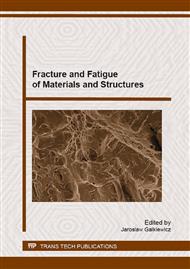p.175
p.182
p.191
p.197
p.203
p.209
p.217
p.223
p.232
Verification of FEM Modelling Capabilities Allowing for the Effects of Strain Rate
Abstract:
The effects of strain rate on the changes in material properties are commonly known [2,5]. This phenomena is also the subject of studies related to composite materials due to fact that composites are widely used as an energy absorbers in road safety structures [6]. Those effects are more often considered as required to be included in the design of structures subject to dynamic loads [1,3]. The example structure is the road infrastructure subject to high strain due to the vehicle impact characterized by a high strain rate [1].Various numerical methods are being employed at the design stage to reduce the costs of experiments on actual structures. One of the most important factors in preparation of the analysis is to select a suitable material model to allow for the effects of strain rate on the changes in material properties. One of the material models allowing for the effects of strain rate is the model developed by G.R. Johnson and W.H. Cook.The study aims to verify the FEM modelling capabilities of the effects characterized by the effects of high strain rate on the material properties. Thus, the strength tests required to determine the material constants for Johnson-Cook model were performed and modelled using FEM method and the results including the effects of strain rate on the mechanical properties were compared.
Info:
Periodical:
Pages:
203-208
Citation:
Online since:
April 2016
Authors:
Keywords:
Price:
Сopyright:
© 2016 Trans Tech Publications Ltd. All Rights Reserved
Share:
Citation:


